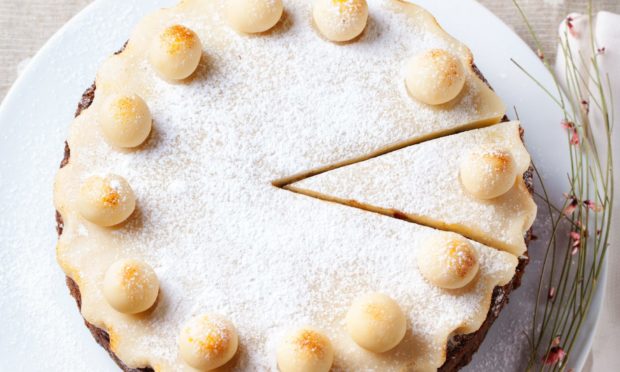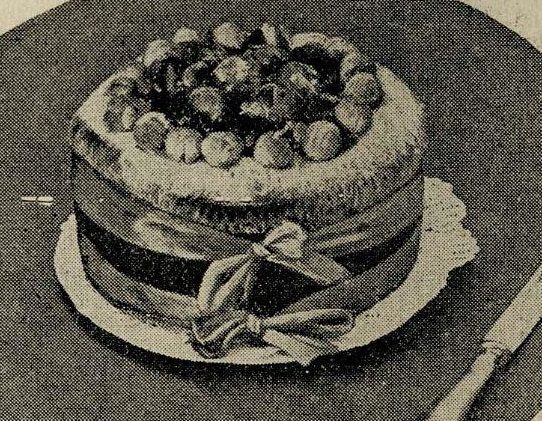Welcome in the New Year with Aunt Kate’s fruit cake recipe from the 1930s.
Aunt Kate, the so-called “original domestic goddess” whose recipes and household tips featured in The People’s Journal and The People’s Friend from the 1880s to the 1960s, wasn’t one to shy away from a celebration cake.
In fact, in her 1933 Baking Book she has an entire page dedicated to them, including this New Year Cake below.
The measurements and ingredients are written as they were in the 1930s and we have converted those and the oven temperature into today’s units as closely as possible, though some may vary slightly.
For more in this series, take a look here.
New Year Cake
Ingredients
- 1lb (approx 450g) flour, sifted
- ½ lb (aprox 225g) mixed peel
- 1½ tsp mixed spice
- ¾ (approx 335g) lb sugar
- ¾ lb (approx 330g) currants
- ½ lb (approx 225g) almonds, blanched and chopped
- Milk
- ¾ lb (approx 335g) butter
- ¼ lb (approx 115g) raisins
- 2 tsp baking powder
- ¾ lb (approx 335g) sultanas
- 1½ tsp ground ginger
- 6 eggs
- Almond paste (Marzipan)
Method
- Line a large cake tin with three folds of buttered paper, after greasing it well.
- Mince the peel finely. Pick over the sultanas, seed and chop the raisins, wash and dry the currants and mix all together with the almonds.
- Beat the butter and sugar to a cream in a basin. Add the flour, sifted with a pinch of salt, alternately with the well-beaten yolks of eggs mixed with 2 tsp milk.
- Stir in the spices sifted with the baking powder.
- Beat well for 5 minutes, then add a little more milk if necessary.
- Lastly, fold in the stiffly-frothed egg whites and bake for four hours in a moderate oven (approx 180-190 °C).
- Roll out a strip of almond paste, 3-inches wide and put it round the edge of the cake. Roughen it with a fork and put the cake back into the oven to brown the paste lightly.
- Arrange a circle of paste balls around the edge of the paste and fill the centre with candied fruits.
- A double band of ribbon gives the cake a festive appearance.
More in this series…
Aunt Kate’s Kitchen: Biscuit recipes from the 1910s you can still make today
Aunt Kate’s Kitchen: Two ginger biscuit recipes from the 1930s that you need to make this month


